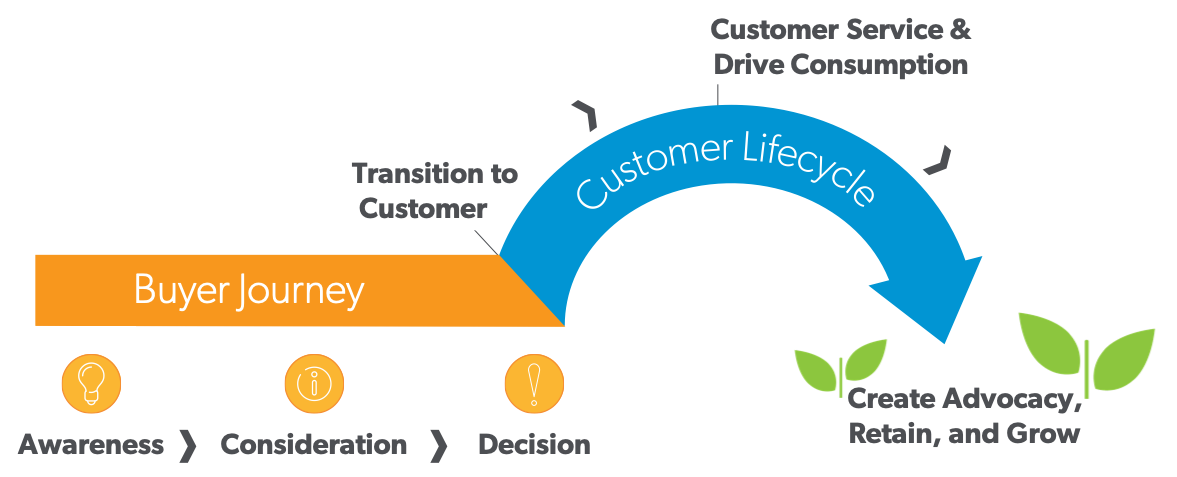As CMOs and CSOs strive to accelerate growth and profitability for their firms, greater alignment on and continuous improvement of three basic metrics of business can go a long way to achieving revenue and profitability goals.
- Customer Acquisition Cost (CAC) – How much does it cost to win a customer?
- Customer Lifetime Value (CLV) – How much is a customer worth?
- Cost to Serve – How much does it cost to keep a customer?
To be specific, CAC is defined as all sales and marketing costs over a given period time, including all headcount related costs, travel and expenses, etc. CLV is usually measured by the level of revenue, gross margin, or profit generated over the lifetime of your company’s relationship with that customer. Cost to serve measures the cost of the actual business activities and overhead incurred to service and retain that customer.
When you combine analysis of all three, you come to the more important question: To what extent is a customer worth their cost? In other words, what is the true value of a customer to my business? Knowing the answer is important when considering entering new markets, developing an ideal customer profile, and determining your sales strategy throughout the customer experience.
Ideally, you want to recover the CAC within the first year or so. An ideal CLV:CAC ratio is around 3:1. The value of a customer should be three times more than the cost of acquiring them. If the ratio is close to less than 3:1, you could be spending too much. If it’s 6:1, you should consider investing more in acquiring customers so you’re not missing out on business.
It is important to know your targeted account’s perception of your company’s entire customer experience. What does the experience look like from the buyer’s perspective? How does it feel for them to be a customer? What is it like for them to leverage your services and products over time? Just as important, you need to have clear and consistent insight into your costs associated with acquiring, retaining, and growing your revenue within the account across the entire customer experience—and the value that account provides to you over time.
Reduce CAC
- Transform cost-burdensome field sales roles to inside sales.
- Leverage alternative sales channels and alliances to attract and close new buyers.
- Continue to improve on sales velocity factors—number of deals, deal size, close rate, and time to close in months.
- Outsource sales tasks to optimize cost and increase speed to market.
Increase CLV
- Create and operationalize a post sales engagement process to ensure a good buyer to customer conversion.
- Consider creating separate but tightly integrated current account development and customer success roles.
- Focus your current account development team on identifying new buying groups and developing cross sell and upsell opportunities.
- Focus customer success representatives on buyer to customer transitions, customer onboarding, and creating advocates for your products within the account.
- Leverage digital touch strategies across the entire customer experience and ensure they are aligned for each type of customer engagement—transactional versus complex purchases and customer interactions.
Reduce Cost to Serve
- Identify and profile high- and low-profit customers. Point your sales and marketing efforts toward acquiring new accounts with the high-profit profile. Consider managing low-profit customers out of your portfolio and find new buying groups within your more profitable accounts.
- Develop and train customers on how to leverage self-service tools.
- Give customers fewer reasons to seek support. Create customer forums and other communication venues to get in front of potential customer satisfaction issues.
In summary, heads of marketing and sales should consistently align on their cost to acquire an account, level of profit generated over time, and the cost associated with keeping the customer. Insights gathered from each metric should drive their strategy on which accounts to target and how to engage them across the entire customer experience in the future.
Want More Help?
Let us determine the appropriate strategy for your company via a MarketSource assessment. MarketSource sales experts will work with you to define your challenges and design a turnkey solution that produces results in the areas of gaining new customers, launching new products, growing market share, optimizing sales expense or maximizing a mature product. Contact us today.



